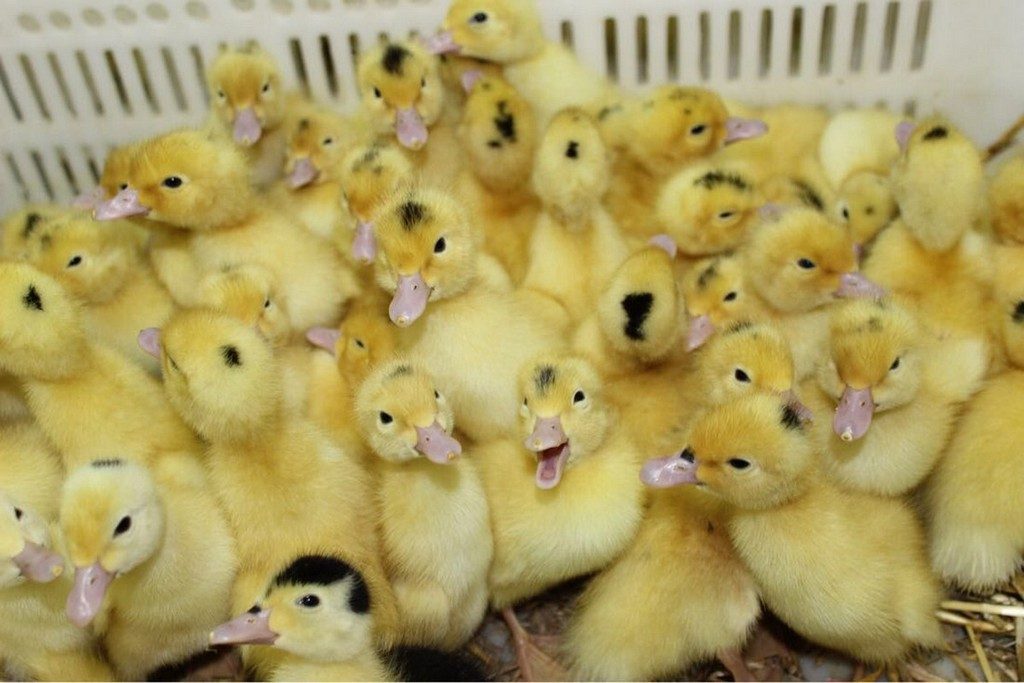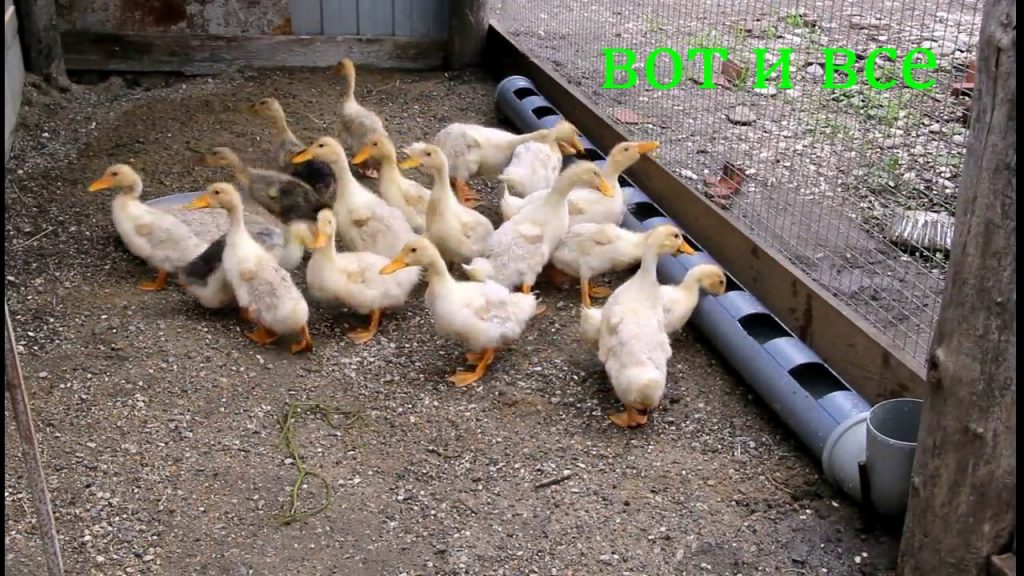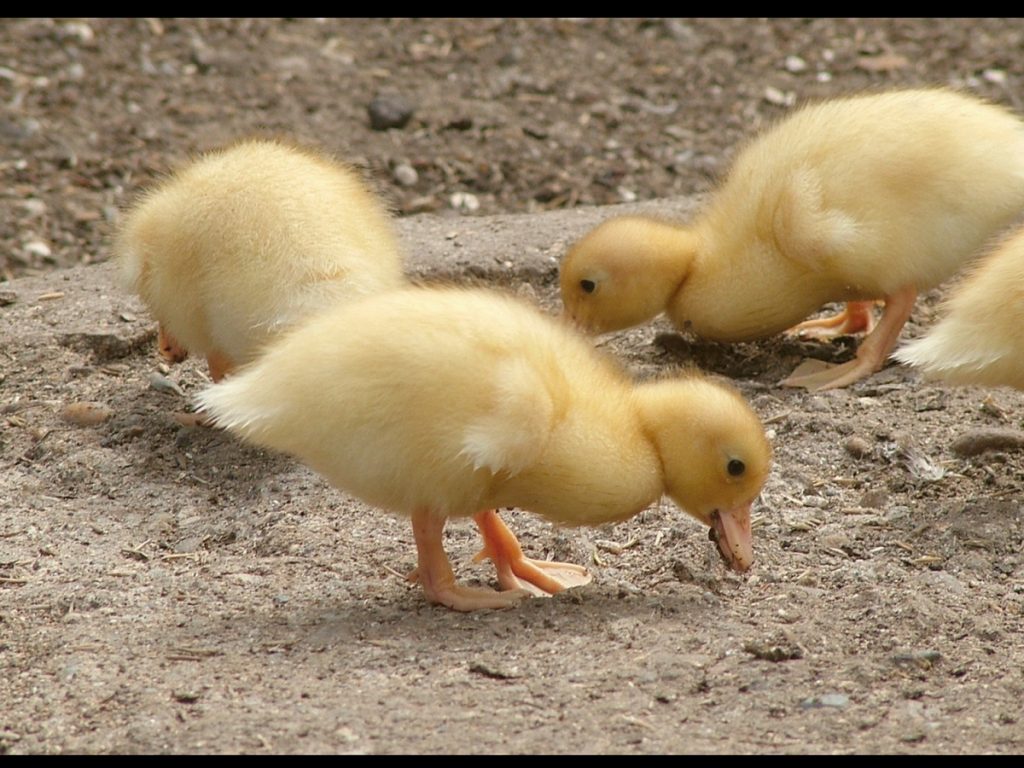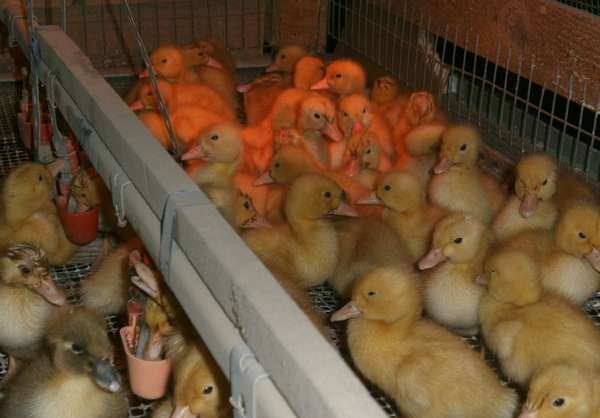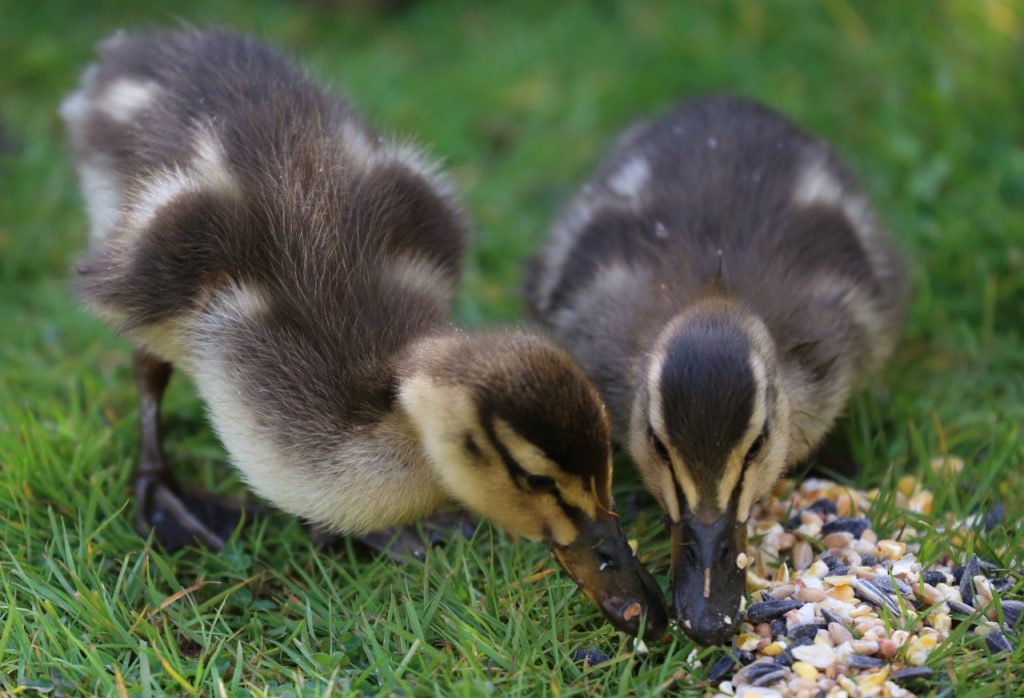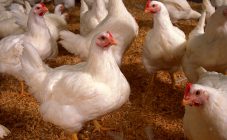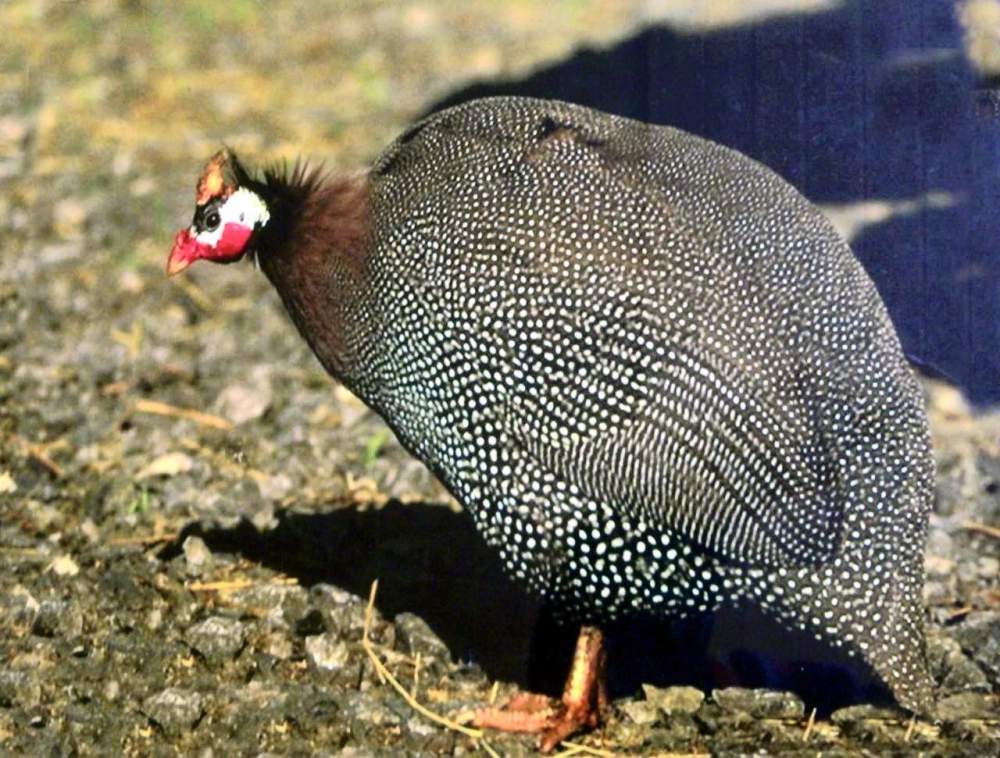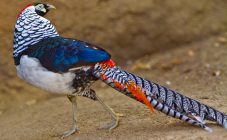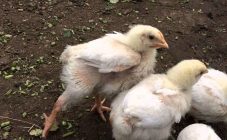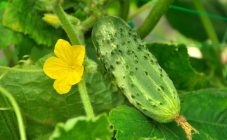Content:
Ducks grow quickly, some breeds are sent to the slaughter at the age of 2-3 months and are raised with the main purpose of obtaining meat. The waterfowl was one of the first to be domesticated. Ducks are hardy, unpretentious to care for and omnivorous, but to obtain delicacies from the liver, specialized feeding is required.
Duck breeding start
Ducklings in your own farm can be obtained by incubating eggs by a brooding duck, by incubating at home, or by purchasing day-old ducklings from proven farms. It is best to buy spring ducklings that hatch in May.
Poultry house for ducklings
Raising ducklings from the first days of life takes place in a warm brooder. A brooder is a box or box made by yourself or purchased. For convenience and cleanliness, a double bottom is arranged in the box, mesh on top. The bedding is cardboard or film, straw and sawdust bedding can be eaten by ducklings, and this is not desirable for their digestive system.
To keep young ducklings up to 25 days in a brooder, it is required to maintain an elevated temperature, depending on age:
- from 1 to 5 days - 30C °;
- from 6 to 10 days - 24C °;
- from 16 to 20 days - 18C °.
The required temperature for caring for ducklings is maintained with the help of heating pads or cans of hot water wrapped in cloth, by adjusting the lamp suspension height. You can also determine the correct temperature by the state of the chicks, if they huddle together, move a little, the temperature should be increased, the ducklings are cold. Ducklings with rapid breathing, with open beaks are hot in a brooder. In a suitable heat regime, the chicks are comfortable, they are vigorous and active, with a good appetite.
In the first few days, the cage is illuminated around the clock using incandescent or infrared lamps, with a power of 2-4 W per m². The duration of illumination is gradually reduced, leaving a weak light on duty.
When duck is kept, the air humidity in the room is maintained within the range of 65-70%. Duck boxes require openings for air in, but without drafts. Dampness is unacceptable in the brooder.
Stocking density by age:
- up to two weeks - 30 ducklings per 1 m²;
- from 2 to 3 weeks - 16-18 ducklings per 1 m²;
- from 4 to 8 weeks - up to 10 ducklings per 1 m².
Young ducklings are taken to the brooder, depending on the season, even if there is a brood hen. The grown ducklings can be put back to the hen. For the survival of immature chicks, it is important to constantly maintain high temperatures, without drops and penetration of cold air.
Ducklings grow quickly, and it becomes cramped in the brooder, it quickly becomes dirty, so from a month old they can be transferred to a common poultry house. Depending on the season, the house is also kept warm with heaters or lamps.
Feeders and drinkers
Ducklings care and feeding at home - for this it is recommended to purchase special bunker feeders and nipple drinkers. The use of special devices for feeding and drinking will keep the box dry and clean longer, the ducklings will not be able to trample the food and spill water.
It is not advisable to use open drinkers in the form of saucers and other containers in order to prevent the bird from getting wet. Two weeks of age is the time when the duckling can swim. The dryness of the duckling during the first period of growth is very important for maintaining its life.
Drinking bowls are set at the rate of 1 pc. for 30 heads. Place the feeder and drinker away from each other so that the water and feed do not mix. Drinking water is changed every day.
Feeding ducklings
The first feeding of ducklings should take place no later than 8-12 hours from the moment of their hatching. Be sure to immediately start watering the ducklings using boiled water. The first few days, feeding occurs at intervals of 2 hours, including at night. By 10 days, the number of feedings is reduced to 8 times, and by one month of age - up to 5 times. After this period, the ducks are usually fed three times a day. An adult Indo-female consumes about 200 g of dry food per day, a Beijing one - 260 g.
To feed the ducklings during the first weeks of life, it is important to give them only dry food. Up to 20 days of age, a starter feed containing the necessary vitamins and minerals is used. Poultry farmers who know how to care for ducklings recommend not feeding chicks of this age with eggs or cottage cheese, because non-specialized feed harms the digestive system of the young.
Up to 14 days, ducklings are not given grass, after that there are no restrictions in herbal feeding, clover, dandelion, nettle, green onions are used.
From the age of one month, ducklings are raised and fed as adults, using fattening compound feed or a grain mixture of wheat, barley, oats, corn. Fish or meat and bone meal, chalk, eggshells, salt are added to the grain mixture.
Once a week, ducklings are given gravel or sand of a coarse-grained fraction, at the rate of 500 grams. for 50 birds.
Ducks are given wet mash, consisting of cooked porridge from cereals and any juicy vegetables or tops, peelings. The mash should have a crumbly composition and not stick together. Next to such food, it is required to place buried containers with water so that the bird can rinse the beak, a wet mash can get into the sinuses of the beak, clog them and interfere with breathing.
If it is possible to walk on ponds, the amount of dry food is reduced to two times a day. It is especially fed in the evening so that the birds get used to returning home.
Walking ducklings
At the age of 2-3 weeks of age, when the duckling is fledging, it can be released for walking. They are released for walking in warm, sunny weather, always putting food and water nearby. From the same time, ducklings are allowed to warm water bodies, if any.
Walking areas should have shady areas, weather sheds or entry into the house.
It is important that there are no foreign objects at the place of walking; ducks can peck nails or glass, damaging the stomach.
If it is possible to walk on water bodies, the bird grows better, receives vitamins and minerals in their natural form from aquatic vegetation, and has the ability to clean feathers. But, for example, musky ducks do not need a reservoir.
When walking, small ducklings must be protected from predators by covering them with a net.
Without the ability to swim, ducks are required to put water in containers to clean their feathers. Ducks are fairly clean birds.
Breeds for breeding
There are different breeds of ducks that can be categorized: meat, egg and down breeds. Some of the popular types for growing ducklings at home for beginners:
- Peking is the most popular breed due to its unpretentiousness and rapid weight gain.A duckling is taken for slaughter from 2 months of growth, at this time it reaches 2.5 kg, while the weight of an adult is 3 kg, a male is 4 kg. Peking meat is considered 35% fat. The Peking duck reproduces well, producing up to 100 eggs per season.
- The musk, or Indo-female, has nothing to do with crossing with turkeys, but originated from crossing with wild relatives from the early places of residence of the Indians. A feature of the breed is that males are twice as large as females. Duck meat is low in fat - 20% and is considered lean. Muscovy duck grows longer than Peking duck, the growth period is 3-4 months. The difference from the Peking duck is also that Indo-ducks are less noisy, they can live without a reservoir.
- Mulard is an interspecific hybrid resulting from the crossing of a musky drake and a Peking, Rouen, Ukrainian and even outbred duck. Mularda have an average growth rate between that of the Peking and Muscovy ducks. Poultry meat is tasty with a reduced fat content - 25%. To obtain a fatty liver, special feeding is required. The peculiarity of mulard is that they are not able to reproduce offspring, therefore, they can be grown only to obtain a tasty meat product.
House requirements
The duck is distinguished by good immunity, tolerance to low temperatures and unpretentiousness to keeping conditions. Adult ducks can live in a poultry house with a temperature of + 5C ° during the cold period, which does not require a capital structure for their maintenance. But low temperatures affect the egg production of females, which, under such conditions, decreases or stops completely.
The house is built of wood, plastic or netting at the rate of 1 m² for several ducks. The poultry house can be built with or without foundation, but on a dry place. The structure should have windows, exit from the poultry house for walking with a convenient descent.
For laying hens, special nests are arranged on the floor for incubating eggs. The nest is a fenced-off part, in the form of a box with an entrance and straw lined inside.
One of the main requirements for a duck poultry house is dryness in it; from high humidity, bird feathers become tousled and retain heat worse. In conditions of constant dampness of the feathers, despite the fact that the duck is a waterfowl, it will begin to get sick.
To keep ducks dry, mesh floors should be preferred over deep bedding of straw and sawdust. Marking boxes are arranged under the mesh floor, with the possibility of cleaning them. Wooden plank floors are installed in the same way.
Ventilation is required in the house. For closed poultry houses, natural and forced ventilation design is used.
When keeping birds only in the summer, you can do with an open boardwalk or net shed, under which ducks only spend the night and hide from the weather.
Ducks care
In caring for poultry, it is important to provide constant nutrition, sufficient drinking water, dry and warm rooms for rest or wintering. In winter, ducks are able to walk in the snow up to 10C °. When walking in cold temperatures, it is important that the ducks do not overcool their paws and drive them into the house on time. In winter, the house is supplemented with dim lamps.
The survival rate of a strengthened one-month-old duckling is high, having successfully passed the early period of growth, with sufficient nutrition, ducks practically do not get sick.
Protein, protein and yeast as part of the starter compound feed must necessarily receive ducks at the growth stage. Feather plucking may indicate a lack of protein or when the livestock is cramped on the proposed area.
Ducklings must be drunk with vitamins.Insufficiency of vitamin B is expressed in the fact that the duck loses orientation, falls down, throws his head back.
Helpful hints and tips
The duck's unpretentiousness to keeping conditions allows even novice poultry farmers without experience to cope with the breeding of this type of poultry. Breeding ducks allows you to get a quick yield of meat products. There are some peculiarities in breeding different species:
- For the reproduction of ducks at home, 5 females are given for one drake;
- Free-range musky breed needs wing clipping because it flies well;
- If the hatched ducklings do not start eating food, they need help by tapping on the feeder or scattering the food on a dark substrate so that they can see it;
- Peking and other breeds of ducks that are gaining a large percentage of fat are not recommended to be overfed with corn, from which fat is gained more;
- Peking duck is sent to the slaughter at 2 months, without waiting for a change of plumage; when changing plumage, the resulting hemp for new feathers spoil the look of the carcass. Muscovy duck is able to gain muscle mass, and not fat, up to six months, in the future, the meat can become tough;
- Poultry are not fed before slaughter to keep their intestines clean, making it easier to cut the carcass.
The duck has a great need for constant nutrition, its growth, especially the Peking one, is rapid. Therefore, the efforts invested will definitely be justified by obtaining a tasty environmentally friendly product in a short time. For all-season production of duck meat, it is recommended to grow different breeds.
